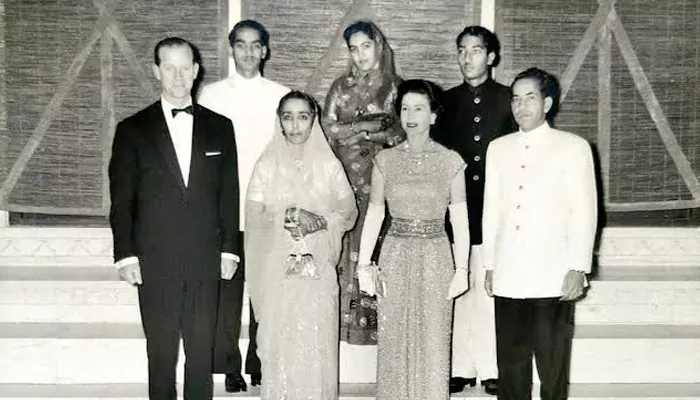
Drapes, diamonds, and diplomacy: the Indian royal banquet with the queen!
You’ve might have heard state dinners, royal banquets, and gala receptions, but ever wondered what happens when Indian royalty, in all their dazzling finery, share a table with the Queen of England?
Let’s rewind to the 1960s—a time of elegance, diplomacy, and lots of glittering tiaras. Queen Elizabeth II, during one of her official visits to India, met several Indian Maharajas and Maharanis who once ruled the princely states in pre-independence era. But this wasn’t mere formal handshake sessions. This was a full-fledged royal dinner where silk sarees swirled, the air smelled of sandalwood, and conversations sparkled as much as the jewels.

The queen dined with some of India’s most iconic royal figures—Maharaja Sawai Man Singh II of Jaipur, the suave polo-playing prince who was once married to the legendary Maharani Gayatri Devi, a global fashion icon and the epitome of grace.
From Hyderabad, Mir Osman Ali Khan—the last Nizam and one of the richest men to have ever lived—was often on the radar of the British royalty for his immense influence. Though he didn’t personally dine with the Queen during this event, the legacy of Hyderabad’s royal hospitality surely echoed in the dinner conversations.
The Queen also met Maharaja Gaj Singh of Jodhpur, who later became a prominent cultural ambassador for India. Apart from that, there were representatives from Bikaner, Baroda, and Mysore, each carrying tales older than the British monarchy itself.

(Credit: The Hindu)
Picture this: royal Rajasthani thali meets British roast, served on plates that probably cost more than your entire wedding budget!
The dinner was a magnificent blend of British etiquette and Indian flavour. Butter chicken stood proudly next to Yorkshire pudding. Rasmalai flirted with English trifle. The Queen, known for her adventurous palate during royal tours, was reportedly impressed with the spice balance.
Let’s not forget the silver cutlery and gold-rimmed glassware. The tables were adorned with fresh jasmine garlands and candles that would put any Pinterest board to shame.
Beyond a fancy dinner—it was an evening loaded with lots of symbolism.
India had become a republic in 1950, but the ties with Britain were still diplomatically very delicate. This banquet acted like a bridge—a nod to the past, but with eyes on future. Queen Elizabeth didn't come as a ruler, but as a guest of a proud democratic nation. And the Indian royals had rebranded themselves as cultural custodians and global citizens.

Gayatri Devi charmed everyone with her wit. The Queen was equally gracious, complimenting the opulence and etiquette of her hosts. It was less Downton Abbey and more Bridgerton meets Mughal-e-Azam.
Queen Elizabeth II visited India thrice—in 1961, 1983, and 1997. Meanwhile, during the first visit, Maharani Gayatri Devi was listed among Vogue’s most beautiful women.
The Nizam of Hyderabad once gifted a 300+ carat diamond to the British crown, which is still there in the Queen’s jewellery collection.
The Queen was gifted a handwoven silk Banarasi sari and an intricately carved silver elephant as part of her visit.
The Rambagh Palace in Jaipur, where one of the royal events was organized, used to be a royal residence and is currently renovated as a luxury hotel.

This iconic gathering wasn’t only about food or fashion. It was about culture meeting tradition, about two worlds learning to walk side by side after centuries of complicated history.
For the Indian royals, it was a moment to assert their new identities. For Queen Elizabeth, it was a lesson in India’s unapologetic grace, grandeur, and generosity.
Want more stories of India’s royal past that reads like a webseries? Stay tuned—we’re serving everyday!